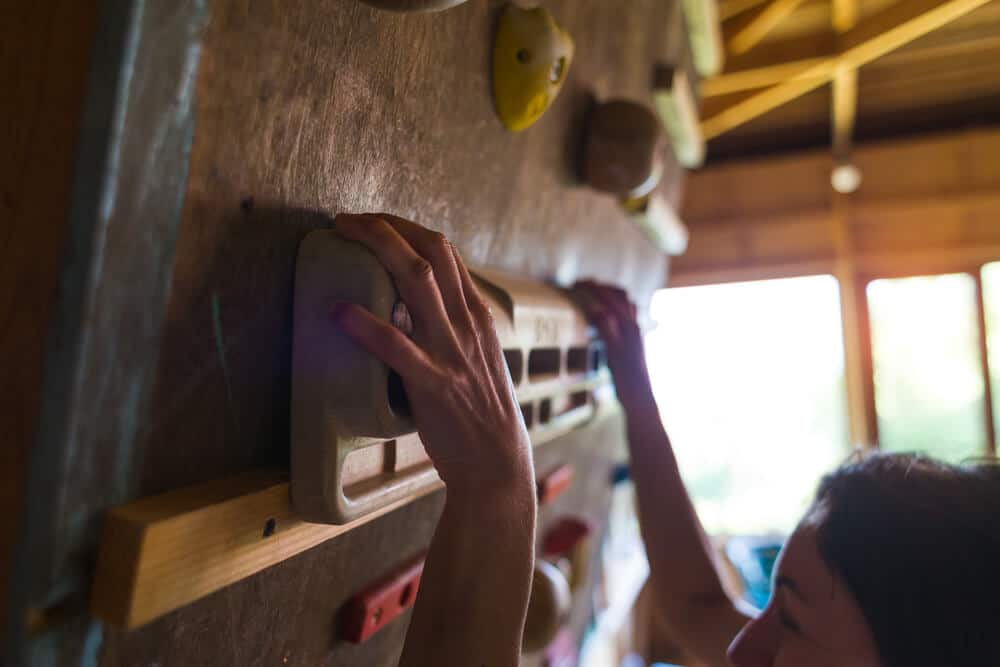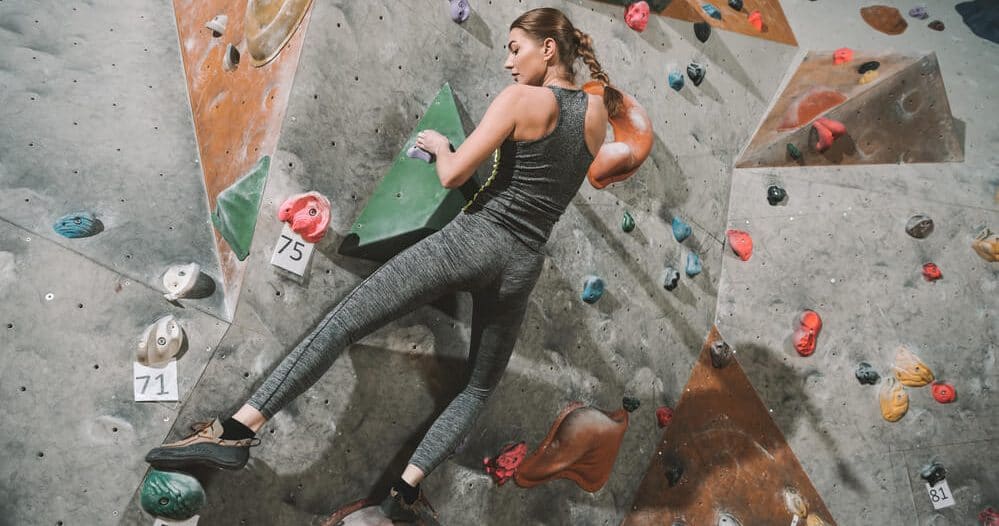What is an Effective Home Climbing Training?
This entry was posted on February 16, 2021.

Gain body awareness even while you are at home. Get inspired to keep doing what you love even when the time you spend outdoors bouldering and rock climbing is very limited. These are workouts that you can also do at home in between your climbing sessions to keep your body in tune for future climbs.
These home climbing training workouts will keep you getting stronger by targeting the most important muscle groups for rock climbing and bouldering. With or without equipment, you can stay in shape and improve your climbing abilities.
Home Climbing Training and Gym Training
Home climbing training and gym training go hand in hand.
There are exercises you can do in the comfort of your home without any equipment and in the gym with the available equipment.
You can also install a climbing wall for a home hangboard workout or a climbing hold in your home for practice.
Whether you are accustomed to climbing training and workouts at the gym or keeping up with your climbing training at home, there are certain fitness exercises that will help you maintain and even improve your climbing skills.
Training will be specific to you and your climbing goals.
While you can’t hit the gym, explore the different rock climbing and bouldering muscle workout exercises that will take you to the next level.
Simple Climbing Training at Home
While indoor climbing gyms are helpful in muscle building and in keeping you fit for climbing, you can also create and develop your home workout routine.
Make the most of your climbing training at home with these workouts from the Appalachian Mountain Club:
Door Frame Pull-ups (for upper body strength)
If you don’t have a hangboard available at home, you can do pullups on a solid wood frame above your door.
Do a few short hang tests to make sure it can carry your weight.
Similar to doing a workout on a hangboard, position your fingers in an open crimp position with your thumb down while doing these pull-ups.
When crimping is not comfortable for you, you can position yourself under a table or a railing, legs sticking out, and your hands wrapped around the edge of the table, palms in.
Keep your feet on the floor while you pull yourself up and down.
Textbook Hold (for grip strength)
Grip strength is a crucial skill in rock climbing and bouldering. One way to improve your grip strength is to walk around your house or the block a few times each day holding a massive book in your hands. Carry the book at the spine and let it hang at your sides.
Plank (for core strength)
Core strength couldn’t be stressed more as vital for any climbing sport.
It helps you in so many ways like:
- Improving your balance
- Footwork precision
- More control over your movements
Perform a plank by first assuming a push-up position. Make sure that your back is straight. Hold this position for as long as you can. You can bend your elbows 90 degrees and drop down to rest on your forearms as an alternative position.
When this position becomes too easy for you, challenge yourself with more difficult planks like lifting your opposite leg and arm while you’re in the pushup position. Hold the position as long as you’d like and then switch.
Tricep Dips (for upper body strength)
Take two chairs of the same height and space them apart with your feet resting on one chair and your legs outstretched. Position your hands on the other chair. Dip yourself down while keeping your head up and legs straight. Push yourself back up.
Single-leg Toe Touches (for lower body strength and to improve balance)
Balance is one of the core skills of climbing. Improve your balance and strengthen your lower body with single-leg toe touches.
- Stand on your right leg with your left leg behind you, raised slightly off the floor.
- Bend your right leg and squat down to touch your left hand to your right big toe.
- Assume the standing position
- Keep your left leg in the air behind you the whole time.
- Switch legs and continue.
Hangboarding
Use proper hand positions and training strategies in hangboarding. Remember that the rule for training specific hand positions is the style of the climb dictates the position. The different hand positions are:
- Open-hand
- Half-crimp
- Full-crimp
Hangboarding can be a useful part of your home climbing training if you can comfortably climb V4. You can focus on technique and gain more benefits if you are at lower levels.
What Home Climbing Workouts Should You Do?
We’ve introduced the simplest and most time-efficient home climbing training that you can do to keep you fit and prepared for your next climb. How you will train and what you will do will entirely depend on your goals and equipment. Keep in mind the important considerations as you explore your options.




